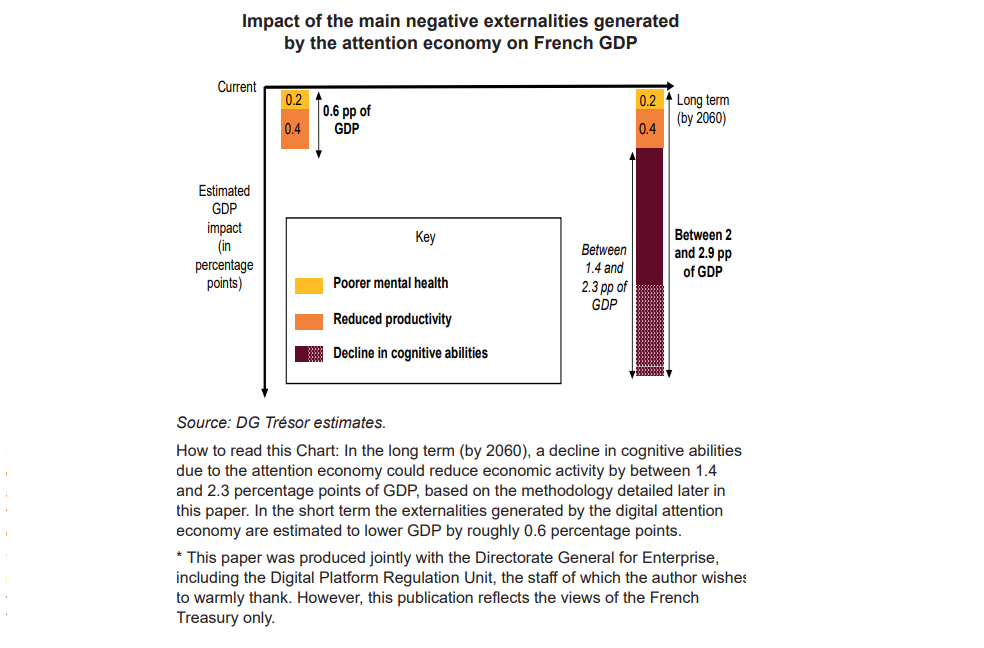The Attention Economy in the Digital Age
Digital firms in the attention economy use business models that monetise consumer attention. Although this generates economic activity, it has negative externalities for users and society that can affect GDP (e.g. due to a decline in cognitive abilities). To reduce these externalities, regulators have several options at their disposal, such as reining in the most harmful features of platforms.
The attention economy refers to business models that seek to monetise consumer attention. Most of these business models rely on advertising, allowing them to provide certain services appreciated by consumers free of charge or at a special rate. Consumers then indirectly “pay” for these services by providing an audience for advertisers.
While these business models have been used for a number of years by legacy media (e.g. print, television), certain digital platforms such as social media are taking them even further, due to technical and economic characteristics specific to their industry.
Digital firms in the attention economy generate economic activity via their revenue, sales from online advertisements and productivity gains from the development of new tools and features.
Nevertheless, the business models of the attention economy have significant negative externalities for users and society (e.g. reduced productivity, impact on cognitive abilities and mental health). According to a review of the existing literature, these negative externalities could reduce GDP in the long term by 2 to 3 percentage points for the quantifiable portion of these impacts. This order of magnitude – which should be interpreted with caution owing to its underlying assumptions – depends above all on a decline in children’s cognitive abilities, which is expected to lower their future productivity when they enter the labour market as adults (see Chart on cover page).
Regulatory initiatives being taken at national and European Union level involve (i) regulating platform features, (ii) protecting vulnerable groups such as children, and (iii) fostering competition to aid the development of healthier alternatives.
